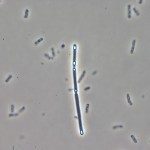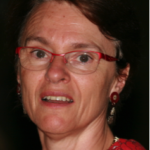Link to Pubmed [PMID] – 11832514
Microbiology (Reading, Engl.) 2002 Feb;148(Pt 2):507-18
There are two major pathways for methionine biosynthesis in micro-organisms. Little is known about these pathways in Bacillus subtilis. The authors assigned a function to the metI (formerly yjcI) and metC (formerly yjcJ) genes of B. subtilis by complementing Escherichia coli metB and metC mutants, analysing the phenotype of B. subtilis metI and metC mutants, and carrying out enzyme activity assays. These genes encode polypeptides belonging to the cystathionine gamma-synthase family of proteins. Interestingly, the MetI protein has both cystathionine gamma-synthase and O-acetylhomoserine thiolyase activities, whereas the MetC protein is a cystathionine beta-lyase. In B. subtilis, the transsulfuration and the thiolation pathways are functional in vivo. Due to its dual activity, the MetI protein participates in both pathways. The metI and metC genes form an operon, the expression of which is subject to sulfur-dependent regulation. When the sulfur source is sulfate or cysteine the transcription of this operon is high. Conversely, when the sulfur source is methionine its transcription is low. An S-box sequence, which is located upstream of the metI gene, is involved in the regulation of the metIC operon. Northern blot experiments demonstrated the existence of two transcripts: a small transcript corresponding to the premature transcription termination at the terminator present in the S-box and a large one corresponding to transcription of the complete metIC operon. When methionine levels were limiting, the amount of the full-length transcript increased. These results substantiate a model of regulation by transcription antitermination.


